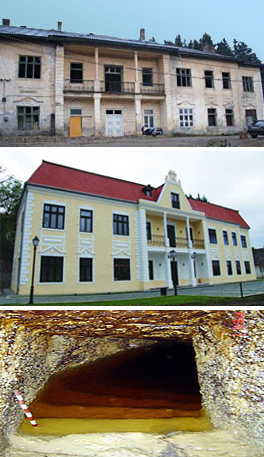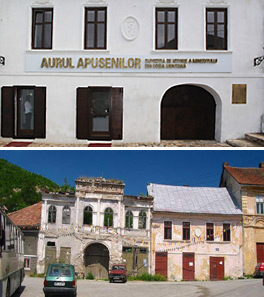A History Worth Saving
Evidence of Roman settlement and mining activities is apparent in Rosia Montana today. But this legacy, including ancient artifacts and infrastructure, is under threat both from natural decay and the damage caused by careless mining during the communist era.
Many of the ancient galleries are collapsing and filling with water. Roman relics are being lost.
The cost to preserve and restore this heritage in compliance with EU standards for safety, cultural integrity and tourism would be hundreds of millions of dollars, a sum that neither the community nor the Romanian state can set aside in these times of austerity.
Gabriel stepped in with the human and financial resources needed first to identify and then preserve the legacy of not only Rosia Montana’s Roman past but also its community heritage and architectural tradition. Over US$30 million has been invested to date by Gabriel.
Investing in Rosia Montana's past to safeguard its future
Gabriel has financed and facilitated a major rescue archaeology effort in Rosia Montana. Modern, state-of the-art research methods and techniques have been utilized - including aerial photography, satellite images, GIS mapping and Ground Penetrating Radar - dedicated to uncovering Rosia Montana's cultural heritage. This intricate work has involved 80 independent experts, 250 workers and support staff, and some 23 national universities, museums, and other international institutions. All of this is conducted to the highest cultural management standards and in compliance with EU and international best practice.
Significant finds have been preserved in place (including Catalina Monulesti, Para Carpeni, Piatra Corbalui and Jig Vaidoaia) while others would be safely moved and exhibited in the new mining museum that is part of Gabriel's Community Development Initiative. The Romanian National History Museum acts as coordinator of this extensive preservation project.
Our plan also includes a preservation area in the centre of the old village and creates a protecting buffer zone of 135 hectares around it.
Preservation and conservation works would continue throughout the life of the Project granting a sustainable future to Rosia Montana. This includes a proposed program of maintenance, restoration and development of cultural heritage, for example:
- Urgent structural repairs and intervention to prevent deterioration and collapse of not only historic but also buildings that define the architectural character of Rosia Montana
- Design/restoration and maintenance of the houses in the Rosia Montana Historical Centre
- Protection and structural support work to prevent the loss of historical monuments like “Building 326” an architectural symbol in the centre of Rosia Montana
- Organisation of the mining museum with indoor and outdoor exhibitions together with public access to the archaeological protected areas
- Major improvement of the local infrastructure and specific programs for promoting tourism in parallel with the mining project.

Above: The Administration Palace before and after restoration; Roman mine gallery - current visiting conditions.

Above: The Mining Museum before and after restoration


